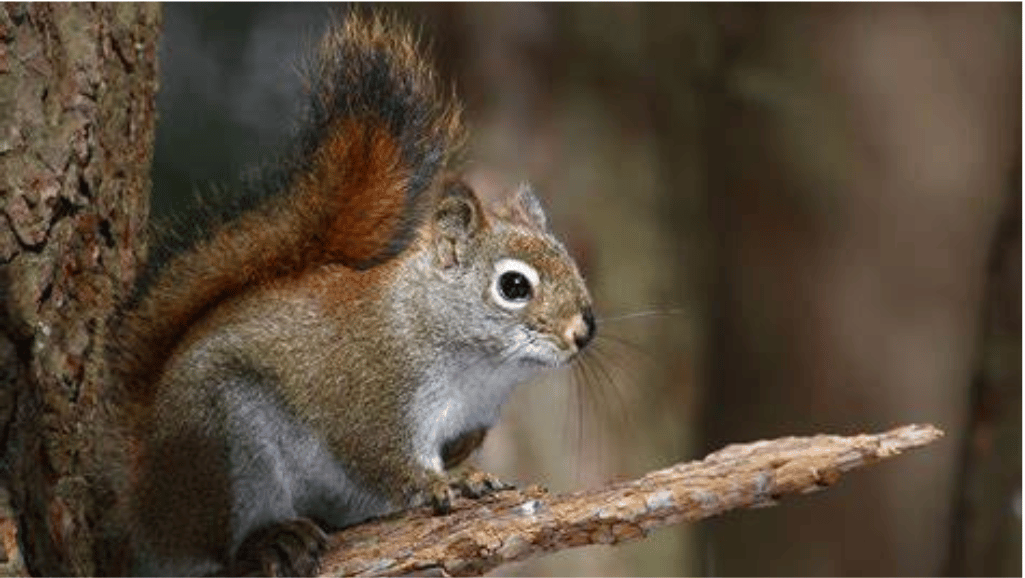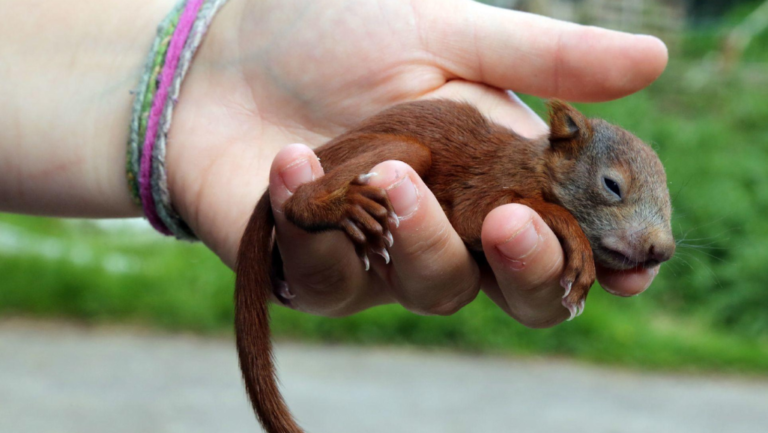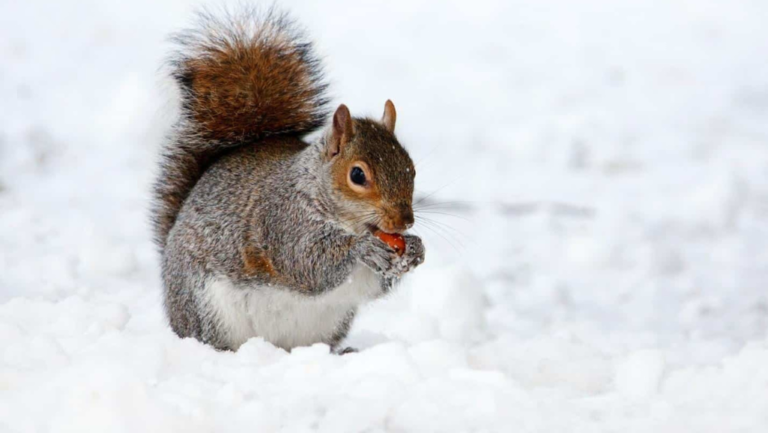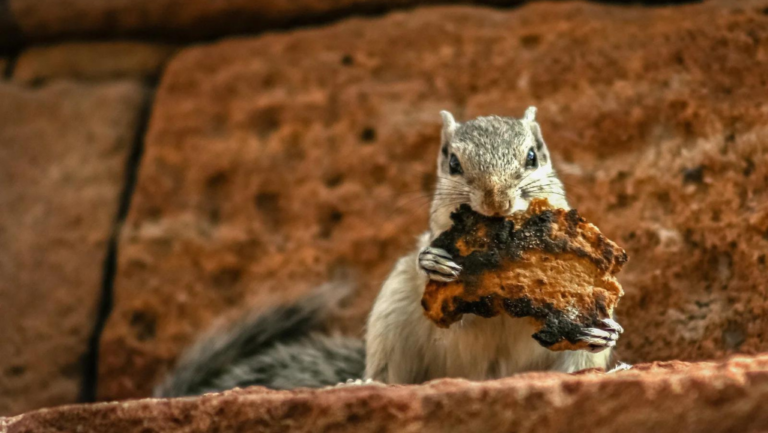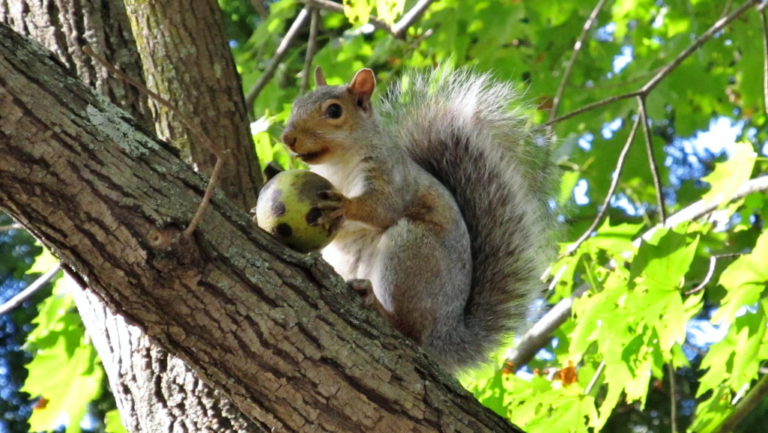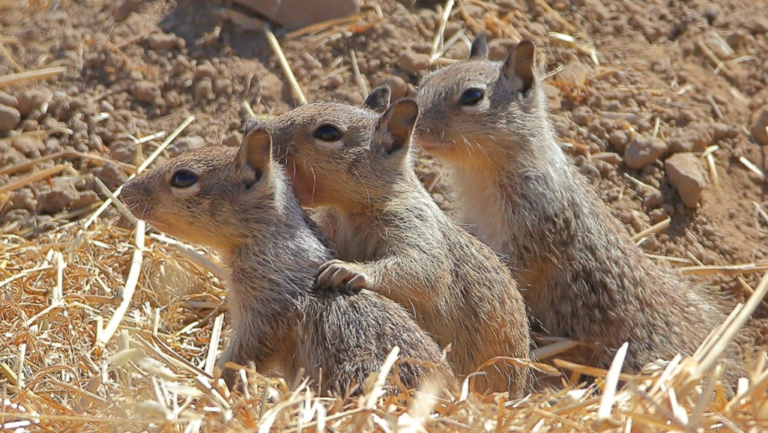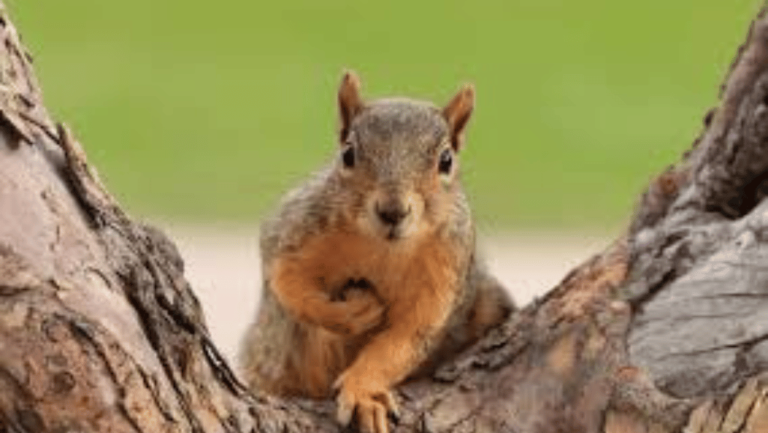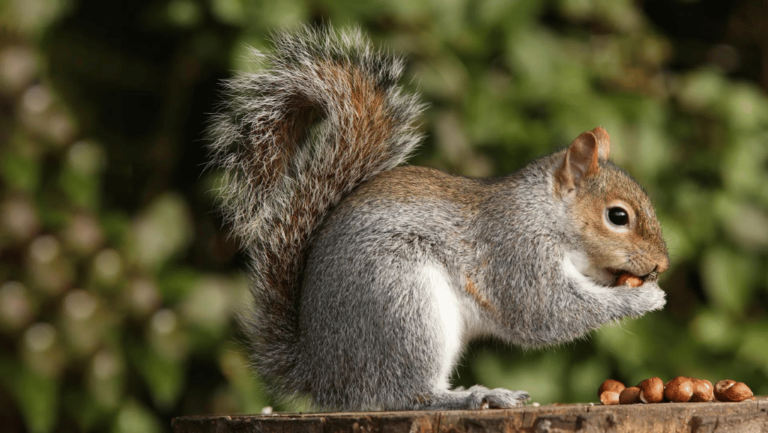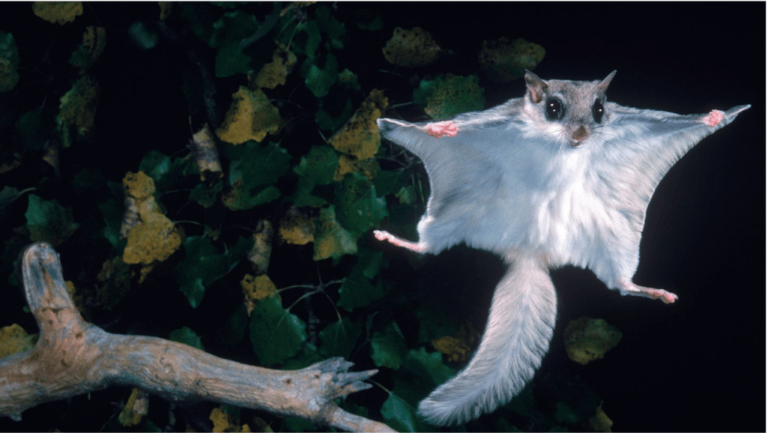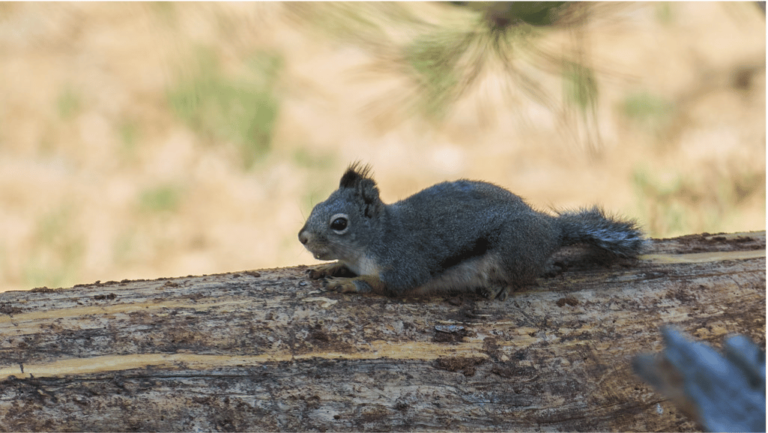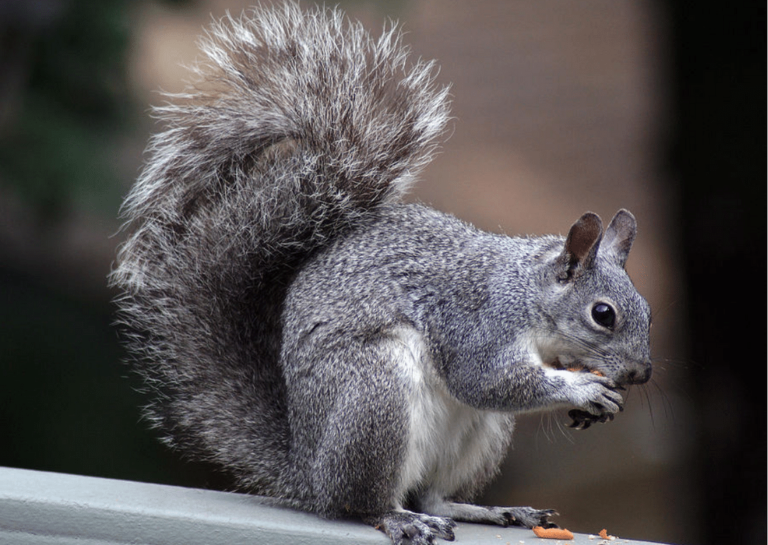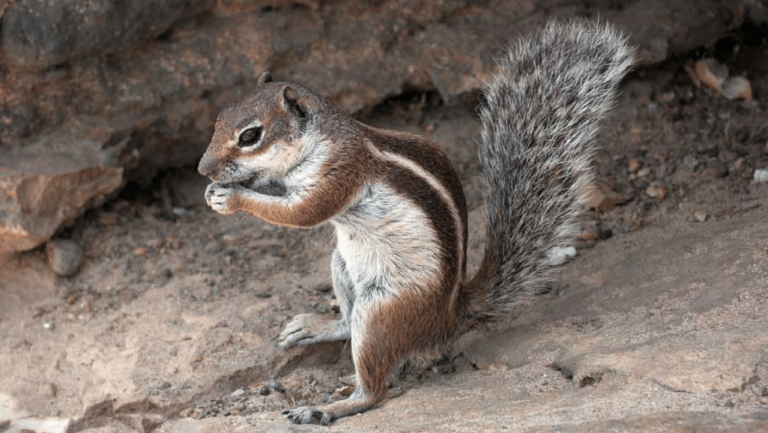The American Red Squirrel, also known as the North American Red Squirrel, is a fascinating native species found in North America. This charming forest-dwelling rodent, scientifically known as Tamiasciurus hudsonicus, is known for its beautiful chestnut-colored fur and fluffy tail. As one of the many squirrel species in North America, the American Red Squirrel holds a special place in American wildlife.
Key Takeaways:
- The American Red Squirrel, or Tamiasciurus hudsonicus, is a native squirrel species found in North America.
- This adorable squirrel has chestnut-colored fur and a fluffy tail, making it highly recognizable.
- The red squirrel is commonly found in montane and subalpine forests, as well as drier, more open yellow pine forests.
- The species is not currently considered threatened, but it is moderately vulnerable to environmental changes.
- Red squirrels primarily feed on seeds, buds, flowers, leaves, and fruit, and build nests called dreys in the branches of trees.
Native Range and Habitat
The American Red Squirrel, also known as the North American Red Squirrel, is native to North America and has a wide distribution across the continent. It can be found in various habitats, but it shows a preference for woodlands that have a significant presence of conifer trees. The species thrives in montane and subalpine forests, where it can utilize the resources provided by these ecosystems. Additionally, the red squirrel is well adapted to drier, more open yellow pine forests, making it a versatile species capable of surviving in different environments.
In Europe, where the red squirrel is also found, it can inhabit large forests, gardens, and parks, and has even been documented at altitudes of up to 2,000 meters. However, in the UK, the red squirrel population is mainly restricted to coniferous forests that have not been invaded by the introduced Grey Squirrel.
The red squirrel’s range and habitat preferences are influenced by the availability of suitable food sources, such as pine seeds, which play a vital role in its survival. These small mammals have adapted to thrive in forested areas where they can find abundant food and suitable nesting sites.
Threats to the Red Squirrel
The American Red Squirrel population is facing several significant threats that are impacting its survival and abundance. These threats include competition with the introduced Grey Squirrel, habitat loss, and the squirrel pox virus.
Competition with Grey Squirrel
One of the primary threats to the American Red Squirrel is competition with the Grey Squirrel. The grey squirrel, originally from North America but introduced to other regions, outcompetes the red squirrel for limited food sources. As a result, the red squirrel is at a disadvantage, which has led to a decline in its population in many areas.
Habitat Loss
Habitat loss is another significant threat to the red squirrel population. The species relies on specific woodland habitats for food and nesting. However, due to deforestation, urbanization, and other factors, these habitats are being destroyed or fragmented. As a result, red squirrels are losing their homes and essential resources, further contributing to their decline.
Squirrel Pox Virus
The red squirrel is highly susceptible to the squirrel pox virus, which is carried by the grey squirrel. This viral infection often proves fatal to red squirrels, while grey squirrels have developed an immunity to it. The spread of the squirrel pox virus through grey squirrel populations poses a significant threat to the survival of red squirrels.
In conclusion, the American Red Squirrel faces multiple threats, including competition with the grey squirrel, habitat loss, and the squirrel pox virus. These factors have contributed to the decline in red squirrel populations, particularly in regions where the grey squirrel has been introduced. It is essential to address and mitigate these threats through conservation efforts to ensure the long-term survival of this iconic species.
The Importance of Citizen Science
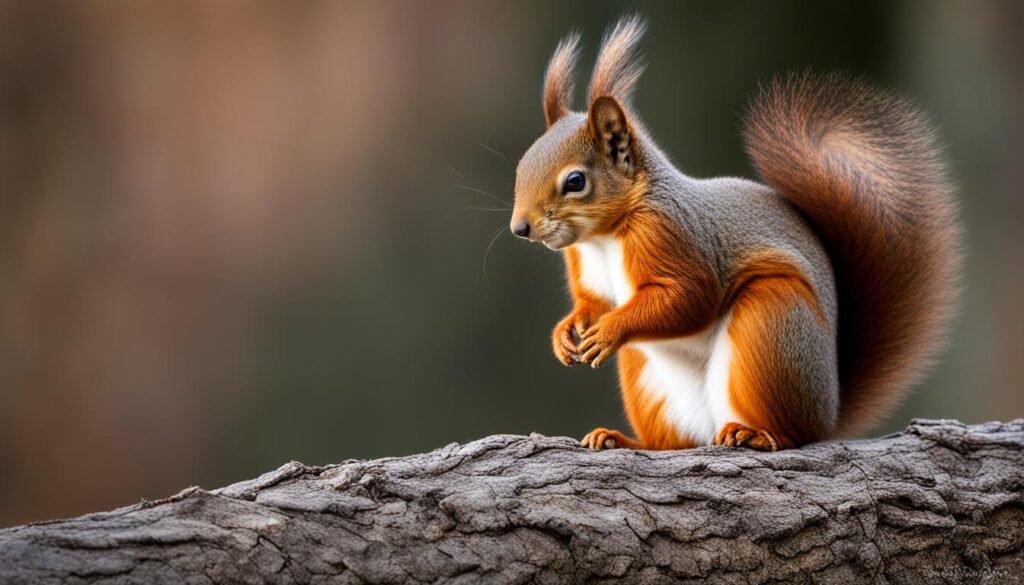
Citizen science plays a crucial role in studying and understanding the American Red Squirrel. Projects like Squirrel Mapper, presented by the State University of New York, College of Environmental Science and Forestry, allow students and the general public to contribute their observations of grey and black squirrels.
This project aims to explore the color variation in squirrel populations and investigate the environmental pressures that may be influencing these variations. Students and participants can report their squirrel observations and use the data to ask questions about squirrel color variation in different areas.
By engaging in citizen science, individuals can contribute to the study of evolution in action and gain a deeper understanding of how squirrels adapt to their habitats.
Conclusion
The American Red Squirrel is a fascinating and vital species that is native to North America. However, it is currently facing significant challenges, including competition with the Grey Squirrel and habitat loss, which have led to a decline in its population. Fortunately, there are ongoing efforts to conserve and protect this iconic species.
Citizen science initiatives, such as Squirrel Mapper, have emerged as crucial tools in studying and understanding red squirrel populations. By actively engaging individuals in the collection of valuable data, these initiatives allow us to gain insights into the threats and vulnerabilities faced by the American Red Squirrel. This knowledge is essential in developing effective conservation strategies.
It is imperative for us to recognize the inherent value of biodiversity and take action to ensure the long-term survival of native species like the American Red Squirrel. By preserving their habitats and ecosystems, we not only safeguard the red squirrel, but also contribute to the well-being of our planet as a whole.
Through collective efforts in red squirrel conservation, we can make a positive impact on reversing the declining trend of its population. Let us continue to embrace citizen science, support conservation initiatives, and champion the importance of preserving the habitats that sustain our precious forest-dwelling gem, the American Red Squirrel.
FAQ
What is the American Red Squirrel?
The American Red Squirrel, also known as the North American Red Squirrel, is a native squirrel species found in North America. It is a forest-dwelling rodent known for its chestnut-colored fur and fluffy tail.
Where is the American Red Squirrel found?
The American Red Squirrel is native to North America and has a wide distribution across the continent. It is most commonly found in montane and subalpine forests, as well as drier, more open yellow pine forests.
What are the threats to the American Red Squirrel?
The American Red Squirrel faces threats such as competition with the introduced Grey Squirrel, habitat loss, and the Squirrel Pox virus carried by greys.
How can citizen science help in studying the American Red Squirrel?
Citizen science initiatives like Squirrel Mapper allow individuals to contribute their squirrel observations and participate in the study of red squirrel populations. This helps in understanding squirrel color variation and the environmental pressures influencing them.
Why is the conservation of the American Red Squirrel important?
The American Red Squirrel is facing population decline due to various threats. By conserving and protecting this iconic species, we contribute to preserving biodiversity and ensure the survival of native wildlife.


